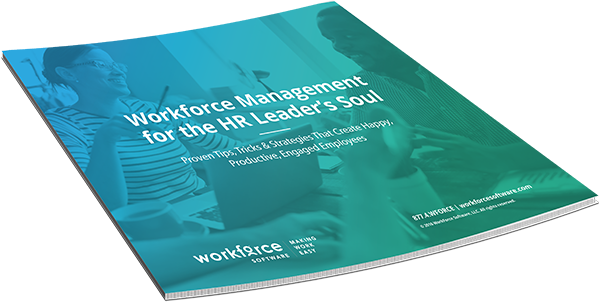How to Stay Positive When Things Fall Apart

Tony Schwartz, founder of The Energy Project, believes in the power of perspective.
“People can cultivate positive emotions by learning to change the stories they tell themselves about the events in their lives,” says Schwartz.
That is, we can choose to see a negative event in a different, more positive light. We can’t change facts, but we can alter how we interpret them.
How? By asking questions designed to shift our perspective.
Picture this scenario:
Subscribe to The WorkForce Blog
Learn the art and science of maintaining productive, happy, engaged employees.
“No,” said Carly.
“No?” said Brendan.
“No,” repeated Carly, his manager. “I’m not sure this plan aligns with the goals we discussed.”
Brendan bit the inside of his cheek as Carly clicked through his PowerPoint deck one last time. She shook her head.
“No,” she said. “Let’s try this again. I’ll send you a list of changes. Can you deliver them by next week?”
“Yes,” said Brendan.
He smiled a fake smile.
“I’d be glad to give it another shot,” he lied.
In this moment, Brendan feels frustrated and demoralized, maybe even angry. Who wouldn’t? He worked for weeks on his presentation. Then again, what’s the point? Harboring negative energy is counterproductive, not to mention bad for your health.
To assuage the negativity caused by a less-than-ideal situation—like Brendan’s—Schwartz suggests asking yourself several perspective-shifting questions:
1. The “Empathy” Question:
“What would the other person in this conflict say and in what ways might that be true?”
Empathy, simply, is the ability to acknowledge the feelings of others. It’s easy to feel victimized if you’re only thinking about yourself, about your agenda.
This question can force Brendan to put his ego aside, giving him the opportunity to consider a different set of circumstances. It opens the door to a perspective other than his own. It’s a powerful headspace to occupy, especially at will.
2. The “Future” Question:
“How will I most likely view this situation in six months?”
Nothing lends perspective to a situation more honestly than time.
This question can help Brendan gage the severity of what he’s going through. Are the consequences temporary or long-lasting? Are they superficial or significant? Time will tell eventually, but framing the situation early on can provide invaluable context.
 Workforce Management for the HR Leader’s Soul
Workforce Management for the HR Leader’s Soul
This book will help you create a healthy, rewarding environment for the people that keep your company moving forward.
3. The “Optimism” Question:
“Regardless of the outcome of this issue, how can I grow and learn from it?”
Every gloomy situation has a silver lining, a reminder that things aren’t all bad. But you have to make a point to look for that optimism, acknowledge it, and derive energy from it. You, alone, make that choice.
This question can give Brendan purpose, if he lets it.
The Gist:
While good energy promotes productivity, bad energy robs otherwise passionate employees of their drive and enthusiasm. At work, bad energy is typically the product of conflict or friction. It happens all the time.
But what if you can’t afford to feel bogged down by internal negativity?
This article explores a simple strategy designed to help people stay positive and productive, even when things fall apart.

 Workforce Management for the HR Leader’s Soul
Workforce Management for the HR Leader’s Soul